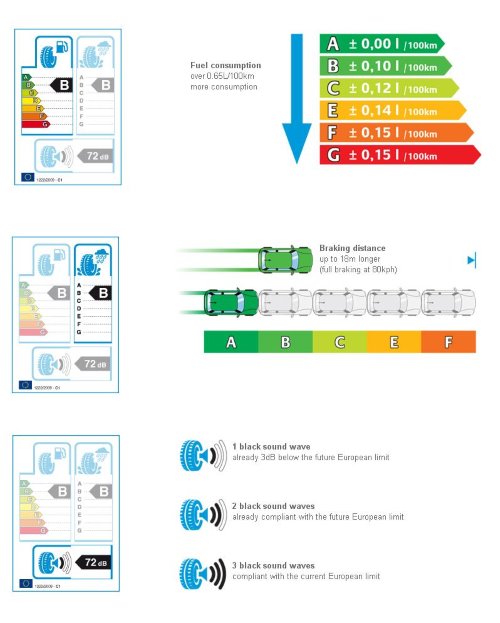
When you buy a new tire, it should have a sticker with ratings of its characteristics in terms of impact on fuel consumption, braking on wet roads and noise. If you do not find a sticker on the tire, you can search for this information on the manufacturer's website.
There are three segments on the label itself:
1. Influence on fuel consumption (symbol of tire and gas station) - the color scale (from green to red) next to the letters (from A to G) tells us how much rolling resistance the tire provides and accordingly affects fuel consumption. The green A mark is the highest score, while the red G mark is the worst.
The difference between the categories is 0.10-0.15 liters of consumption per 100 kilometers for a car that consumes an average of 6.6 liters of fuel per 100 kilometers. We come to the conclusion that the "C" category tire on a car that consumes 6.6 liters per 100 kilometers, for 30,000 kilometers will consume 90-135 liters less fuel than the tire in the "G" category, of course if the car has higher fuel consumption is higher and the difference in savings.
2. Wet grip (symbol of rubber and rain cloud) - we also have letters from A to G, but without colors in this case. A is the best grade, F the worst.
When braking hard at 80 km / h, A-rated tires will allow the car to have up to 18 meters shorter braking distance than a car with F-rated tires. Of course, this is just an example, and the difference in practice depends on many other factors.
3. Noise (symbol of the tire and the "siren" that emits sound waves) - on the label itself you can see that from the "siren" that emanates from the tire come three sound waves with the number of decibels (dB). Since the number of decibels does not mean much to the average person, sound waves vividly indicate how noisy the tire is according to how many sound waves are filled with black.